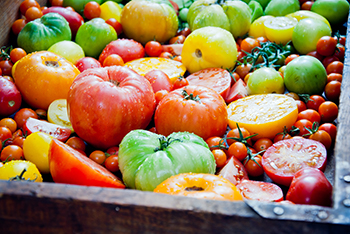More Health and Nutrition Bites
Related
Don't let the brand fool you
This healthy "halo effect" isn't limited to the description of the food, as you might guess. The food's brand carries an effect, as well. Researchers in the Psychology department at The College of William & Mary have just published a study in the journal Appetite (2014;82:1-7) looking at the interaction between brand perception, calorie information, and the individual's intake of a snack food.
Perception Matters
I was giving a talk the other night and as part of it there was a discussion of how the perceptions of what we eat can guide our consumption. One of my favorite researchers, Brian Wansink, has published numerous studies showing that how we think about food influences what we eat. His work has both the ability to help us understand how we look at food but also to laugh at ourselves a bit over how easily we can be duped by our perceptions.
Size Does Matter
Many diet plans and diet books for years have recommended using small plates to make it look like you are eating more. This concept was put to the test by two researchers, Brian Wansink and Matthew Cheney. In a research letter published by the Journal of the American Medical Association (JAMA Vol. 293 No. 14, April 13, 2005) they showed that the size of serving bowls makes a difference on the amount people eat.
Health & Nutrition Bites
Get the latest health and diet news - along with what you can do about it - sent to your Inbox once a week. Get Dr. Gourmet's Health and Nutrition Bites sent to you via email. Sign up now!
The health halo of "organic"

Here at DrGourmet.com I've addressed the idea of the "health halo" in both Health & Nutrition Bites as well as columns under my "Dr. Tim Says..." byline. Essentially, a "health halo" describes the way that a specific label on a food might lead people to believe erroneous things about that food. For example: describing a cookie as "high-fibre" as opposed to "gourmet" led people to eat 35% more those cookies labeled as "high fibre" - even though it was the same cookie regardless of description.
The brand of a food can carry a similar kind of weight: those who received a cookie labeled as being from a health-conscious brand were inclined to eat more cookies than those given the same cookie labeled with a less-health-conscious brand.
Today's article focuses on the "organic" label, and the researchers, based largely in France (Appetite 2019;137:134-144), devised an online study to assess whether labeling a food "organic" meant a similar tendency to underestimate the number of calories in a food.
The authors recruited 269 men and women from the general population to partipate in the online study. Participants were shown pictures of identical cookies, some described as "organic" and some not described as organic.
In both cases the participant was provided with nutrition information about the cookies (with identical caloric information provided for both types of cookies).
Then they were shown cookies purportedly from other brands, some labelled organic and some not labelled organic, and asked to estimate whether the shown cookie had greater or fewer calories than the baseline cookie (half of the test group had "organic" cookies at baseline, half had "classic" cookies at baseline).
Not only did the participants consistently rate the "organic" cookies as having fewer calories than the "classic" cookies - they also indicated that it would be acceptable to consume those "organic" cookies more frequently than the "classic" cookies. This despite the fact that both types of cookies had identical nutrition information.
What this means for you
Don't fall for the "health halo" effect: a food might be "organic," but broadly speaking, a calorie is a calorie: choosing organic foods is all very well, but for your health you must read the nutrition information. Here's how to read a Nutrition Label.
First posted: April 3, 2019
